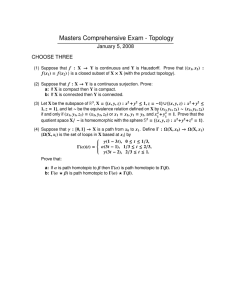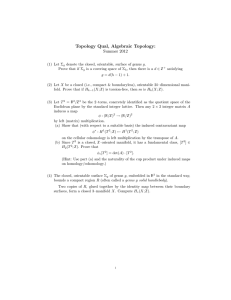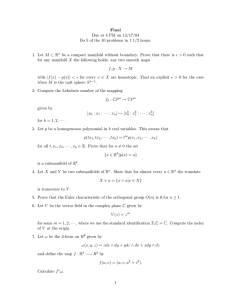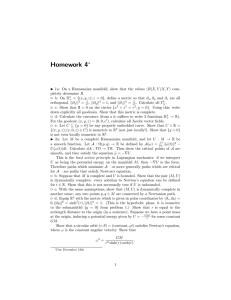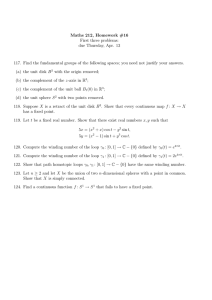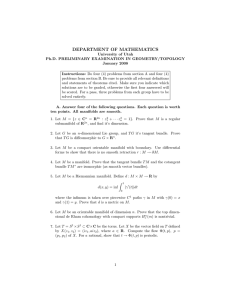1. Prove that for n ≥ 2 R,
advertisement
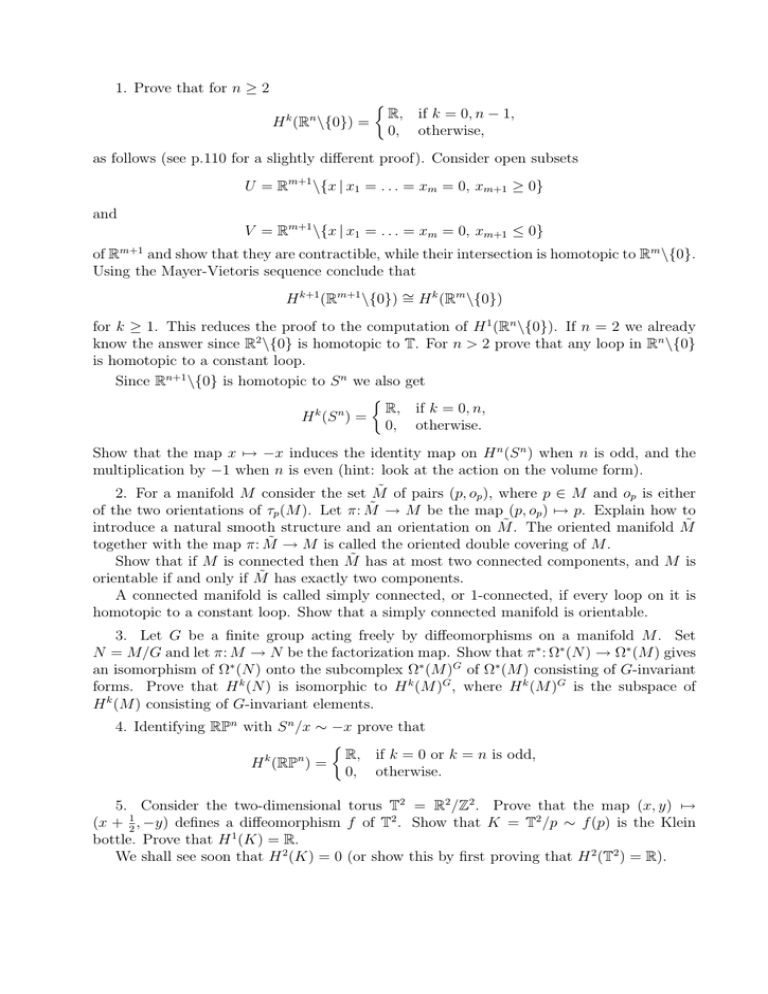
1. Prove that for n ≥ 2
k
n
H (R \{0}) =
R, if k = 0, n − 1,
0, otherwise,
as follows (see p.110 for a slightly different proof). Consider open subsets
U = Rm+1 \{x | x1 = . . . = xm = 0, xm+1 ≥ 0}
and
V = Rm+1 \{x | x1 = . . . = xm = 0, xm+1 ≤ 0}
of Rm+1 and show that they are contractible, while their intersection is homotopic to Rm \{0}.
Using the Mayer-Vietoris sequence conclude that
H k+1 (Rm+1 \{0}) ∼
= H k (Rm \{0})
for k ≥ 1. This reduces the proof to the computation of H 1 (Rn \{0}). If n = 2 we already
know the answer since R2 \{0} is homotopic to T. For n > 2 prove that any loop in Rn \{0}
is homotopic to a constant loop.
Since Rn+1 \{0} is homotopic to S n we also get
R, if k = 0, n,
k
n
H (S ) =
0, otherwise.
Show that the map x 7→ −x induces the identity map on H n (S n ) when n is odd, and the
multiplication by −1 when n is even (hint: look at the action on the volume form).
2. For a manifold M consider the set M̃ of pairs (p, op ), where p ∈ M and op is either
of the two orientations of τp (M ). Let π: M̃ → M be the map (p, op ) 7→ p. Explain how to
introduce a natural smooth structure and an orientation on M̃ . The oriented manifold M̃
together with the map π: M̃ → M is called the oriented double covering of M .
Show that if M is connected then M̃ has at most two connected components, and M is
orientable if and only if M̃ has exactly two components.
A connected manifold is called simply connected, or 1-connected, if every loop on it is
homotopic to a constant loop. Show that a simply connected manifold is orientable.
3. Let G be a finite group acting freely by diffeomorphisms on a manifold M . Set
N = M/G and let π: M → N be the factorization map. Show that π ∗ : Ω∗ (N ) → Ω∗ (M ) gives
an isomorphism of Ω∗ (N ) onto the subcomplex Ω∗ (M )G of Ω∗ (M ) consisting of G-invariant
forms. Prove that H k (N ) is isomorphic to H k (M )G , where H k (M )G is the subspace of
H k (M ) consisting of G-invariant elements.
4. Identifying RPn with S n /x ∼ −x prove that
R, if k = 0 or k = n is odd,
k
n
H (RP ) =
0, otherwise.
5. Consider the two-dimensional torus T2 = R2 /Z2 . Prove that the map (x, y) 7→
(x + 21 , −y) defines a diffeomorphism f of T2 . Show that K = T2 /p ∼ f (p) is the Klein
bottle. Prove that H 1 (K) = R.
We shall see soon that H 2 (K) = 0 (or show this by first proving that H 2 (T2 ) = R).
